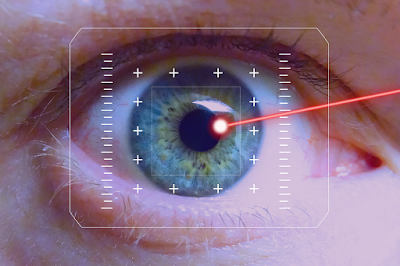clinical laser
we know laser from the laser pointer and in movies as the weapon but we don't know lasers are used in medical field and also in cosmetics.
so what is laser?
As from name define light amplification by simulated emission of radiation
for understanding the working of laser first we know about simulated emission fo radiation
so let's start
for understanding this we should consider at the atomic level
At the atomic level atoms have various energy level when electrons get energized
it leaves its energy level and goes into higher energy level but for a very very short
time in higher level and then goes to its early level so when it goes in lower level
it emits the energy in form of photon or light
so going electron in higher level known as absorption
so in simulated emission when the electron goes from high to low
before goes to lower it stay in a mid-state for very short time
so it releases more photon than from going high to low.
How to function laser?
so enhancement of light was accomplished from an increase medium in laser material is kept between two mirrors one is exceedingly 100% reflective and other is partially reflective.
lasers are different types
Solid state: lasers have lasing material appropriated in a strong grid, e.g., the ruby or neodymium-YAG (yttrium aluminum garnet) lasers. The neodymium-YAG laser transmits infrared light at 1.064 micrometers.
Gas lasers :(helium and helium-neon, HeNe, are the most well-known gas lasers) have an essential yield of an unmistakable red light. CO2 lasers emanate vitality in the far-infrared, 10.6 micrometers, and are utilized for cutting hard materials.
Excimer lasers: (the name is gotten from the terms energized and dimers) utilize receptive gases, for example, chlorine and fluorine blended with dormant gases, for example, argon, krypton, or xenon. At the point when electrically animated, a pseudomolecule or dimer is delivered and when lased, creates light in the bright range.
Color lasers: utilize complex natural colors like rhodamine 6G in fluid arrangement or suspension as lasing media. They are tunable over an expansive scope of wavelengths.
Semiconductor lasers: once in a while called diode lasers are not strong state lasers. These electronic gadgets are by and large little and utilize low power. They might be incorporated with bigger exhibits, e.g., the written work source in some laser printers or conservative plate players.
Kinds of lasers are utilized as a part of medicinal field
Restorative surgery (evacuating tattoos, scars, extend marks, sunspots, wrinkles, skin colorations, and hairs): see laser hair expulsion. Laser composes utilized as a part of dermatology incorporate ruby (694 nm), alexandrite (755 nm), beat diode cluster (810 nm), Nd: YAG (1064 nm), Ho: YAG (2090 nm), and Er: YAG (2940 nm).
Eye surgery and refractive surgery.CO2, Er: YAG laser: Soft tissue surgery
"No-Touch" evacuation of tumors, particularly of the mind and spinal line.
Shrewd laser spot grouping for skin wellbeing appraisals (particularly in regards to harm caused by maturing)
In tooth brightening, and oral surgery
Disease treatment moreover











